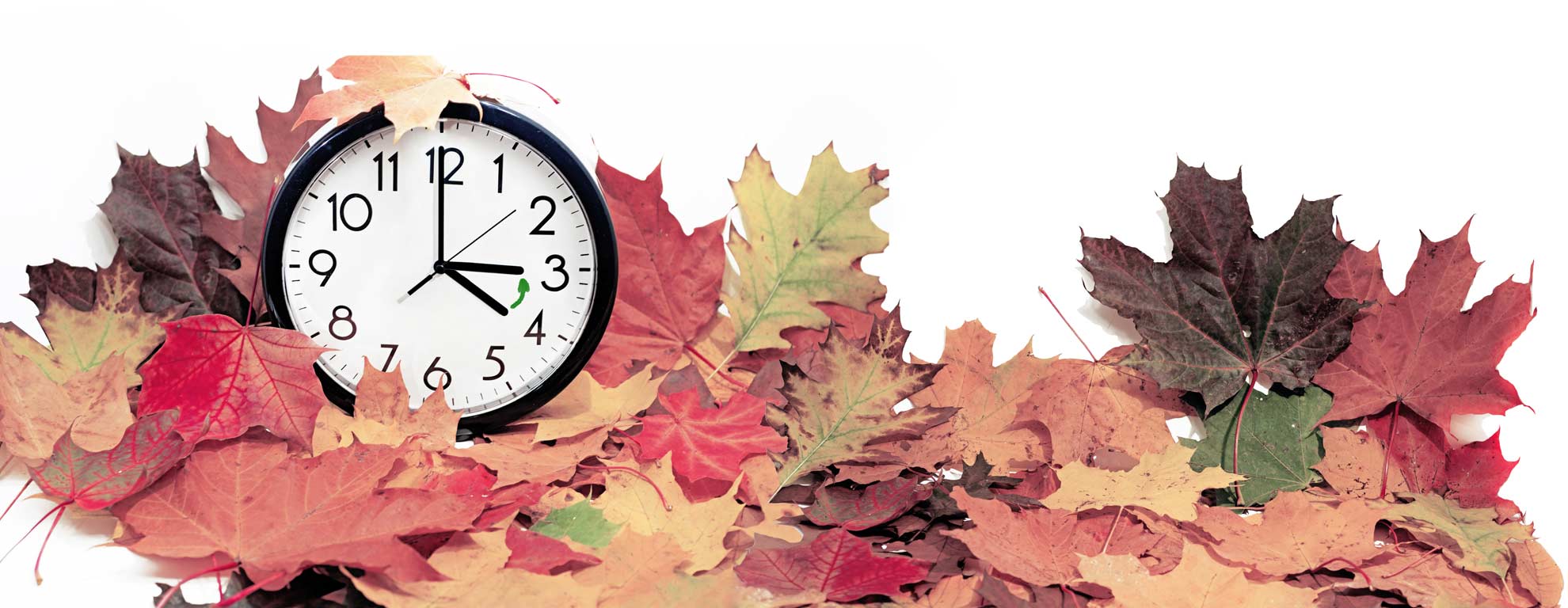Time for change

This month we have to change our clocks. According to the UK Government: In the UK the clocks go back 1 hour at 2am on the last Sunday in October. When the clocks go back, the UK is on Greenwich Mean Time (GMT). So, we are changing from British Summer Time (BST) to GMT on Sunday 27th October.
History
Time was not always the same wherever you went in the same country. The Romans and other civilisations used water clocks but not standard was adopted until Britain started building its national rail network. As the trains travelled across the country, a standard ‘clock’ time was required to produce a workable timetable. This approach was subsequently adopted by other nations and developed to create the time zones which cover the globe today.
Brexit
Interestingly the changing of clocks in spring and autumn is managed differently depending where you are in the world. All EU member states move clocks back one hour on Sunday, under a law that harmonises the duration of wintertime to prevent a proliferation of different seasonal changes across neighbouring countries.
In the US, clocks go back on the first Sunday in November. In the antipodes, New Zealand moved its clocks forward at the end of September and Australian states that observe daylight saving (New South Wales, Victoria, South Australia, Tasmania and the Australian Capital Territory) made the switch on the first Sunday in October.
Russia decided to stick with daylight saving all year round in 2011, but that led to darkness at noon in some latitudes, and so in 2014 it reverted to standard time in the autumn.
Unfortunately, Brexit is likely to make its impact felt on even this aspect of our life too as earlier in 2019 the European parliament voted to scrap daylight saving time by 2021. Which means according to the Guardian that “for half the year Northern Ireland and the Republic of Ireland would be in different time zones. Forget hard border, soft border and customs border: this would be a “time” border “
Benefits
Changing the clocks was supposed to give more light to parts of the day when it would be more useful. In the autumn there is an hour more daylight in the morning (rather than the evening) when it is more needed, although this is debated almost continuously.
Driving
As peak driving times are between 8am and 10am in the morning between 3pm and 7pm, this means the majority of these peak hours in the afternoon are in darkness. Although more accidents happen for a whole variety of reasons (such as tiredness, etc) in the afternoon peak than in the morning peak, some studies have suggested that putting the clocks back in the autumn might increase accident numbers.
The RAC Foundation, using methodology developed by Road Safety Analysis in 2010, revealed that police data from the past six years shows that in the two weeks after the clocks go back one hour there are an average of 278 more personal injury collisions than in the previous two weeks. Three quarters of the extra collisions occur in the afternoons, which are darker after the clock change.
The Royal Society for the Prevention of Accidents (RoSPA) is calling for an end to Daylight Savings Time clock changes in order to prevent serious injury and death on the road. The family safety charity supports the European Parliament proposal to stop the obligatory one-hour, twice-yearly clock change which extends daylight hours in the summer but reduces usable daylight hours in winter evenings.
In March 2019 RoSPA chief executive Errol Taylor said: “the priority should be the prevention road accidents that cause serious injury and death. Road casualty rates increase with the arrival of darker evenings and worsening weather conditions. And it is vulnerable road users – such as children on their way home from school and cyclists – who would experience the most benefit. Currently, vulnerable road users have far higher fatality rates per billion passenger miles. Anything we can do to bring these rates down has to be worth it.”
By Sarah Anglim at 18 Oct 2019